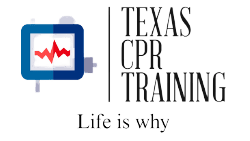
Heart Disease
Mary Elizabeth Clark | 1929 – 2011 |
This article is dedicated to my beautiful mother who passed away from complications stemming from heart disease.
According to the American Heart Association Cardiovascular disease is caused by narrowed, blocked or stiffened blood vessels that prevent your heart, brain or other parts of your body from receiving enough blood. Cardiovascular disease symptoms may be different for men and women. For instance, men are more likely to have chest pain; women are more likely to have symptoms such as shortness of breath, nausea and extreme fatigue.
You might not be diagnosed with cardiovascular disease until you have a heart attack, angina, stroke or heart failure. It’s important to watch for cardiovascular symptoms and discuss concerns with your doctor. Cardiovascular disease can sometimes be found early with regular exams.
About heart attack
Some heart attacks are sudden and intense — the “movie heart attack,” where no one doubts what’s happening. But most heart attacks start slowly, with mild pain or discomfort. Often people affected aren’t sure what’s wrong and wait too long before getting help.
Immediately call 9-1-1 or your emergency response number so an ambulance (ideally with advanced life support) can be sent for you. As with men, women’s most common heart attack symptom is chest pain or discomfort. But women are somewhat more likely than men to experience some of the other common symptoms, particularly shortness of breath, nausea/vomiting, and back or jaw pain. Learn more about heart attack symptoms in women.
Learn the signs, but remember this: Even if you’re not sure it’s a heart attack, have it checked out (tell a doctor about your symptoms). Minutes matter! Fast action can save lives — maybe your own. Call 9-1-1 or your emergency response number.
Calling 9-1-1 is almost always the fastest way to get lifesaving treatment. Emergency medical services (EMS) staff can begin treatment when they arrive — up to an hour sooner than if someone gets to the hospital by car. EMS staff are also trained to revive someone whose heart has stopped. Patients with chest pain who arrive by ambulance usually receive faster treatment at the hospital, too. It is best to call EMS for rapid transport to the emergency room.
The Mayo Clinic states that heart disease is easier to treat when detected early, so talk to your doctor about your concerns about your heart health. If you’re concerned about developing heart disease, talk to your doctor about steps you can take to reduce the risks. This is especially important if you have a family history of heart disease.
Some heart attack warning signs are:
Chest discomfort – Most heart attacks involve discomfort in the center of the chest that lasts more than a few minutes, or that goes away and comes back. It can feel like uncomfortable pressure, squeezing, fullness or pain.
Discomfort In Other Areas of the Upper Body – Symptoms can include pain or discomfort in one or both arms, the back, neck, jaw or stomach.
Shortness of Breath – with or without chest discomfort.
Other Signs – may include breaking out in a cold sweat, nausea or light headedness.
Risk Factors:
Modifiable Risk Factors:
*Physical activity – The World Health Organization believes that more than 60% of the global population is not sufficiently active.
*Tobacco – Cigarette smoking increases the risk of coronary heart disease by itself.
*Diet – A healthy diet can reduce your risk of: heart disease, heart attacks, and stroke.
*Hypertension – Causes the coronary arteries serving the heart to slowly become narrowed.
*Obesity – Being overweight or obese can raise your risk of CAD (Coronary Artery Disease) and heart attack
*Diabetes – If you have diabetes you are two to four times more likely to develop cardiovascular disease than people without diabetes.
Statistics
Heart disease is the No. 1 killer of women, causing 1 in 3 deaths each year. That’s approximately one woman every minute!
Cardiovascular diseases and stroke cause 1 in 3 women’s deaths each year, killing approximately one woman every 80 seconds.
80% of heart disease and stroke events may be prevented by lifestyle changes and education
Fewer women than men survive their first heart attack.
An estimated 44 million women in the U.S. are affected by cardiovascular diseases.
Nearly 383,000 out-of-hospital sudden cardiac arrests occur annually, and 88 percent of cardiac arrests occur at home. That is why it is important to know the signs of a heart attack, and take a CPR class at Texas CPR Training, www.texascpr.com.
WebMd
Mayo Clinic
The American Heart Association
Centers for Disease Control and Prevention
